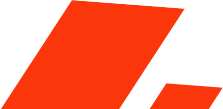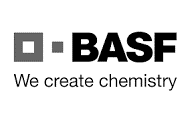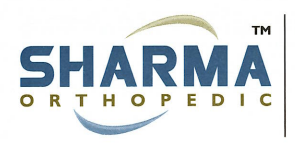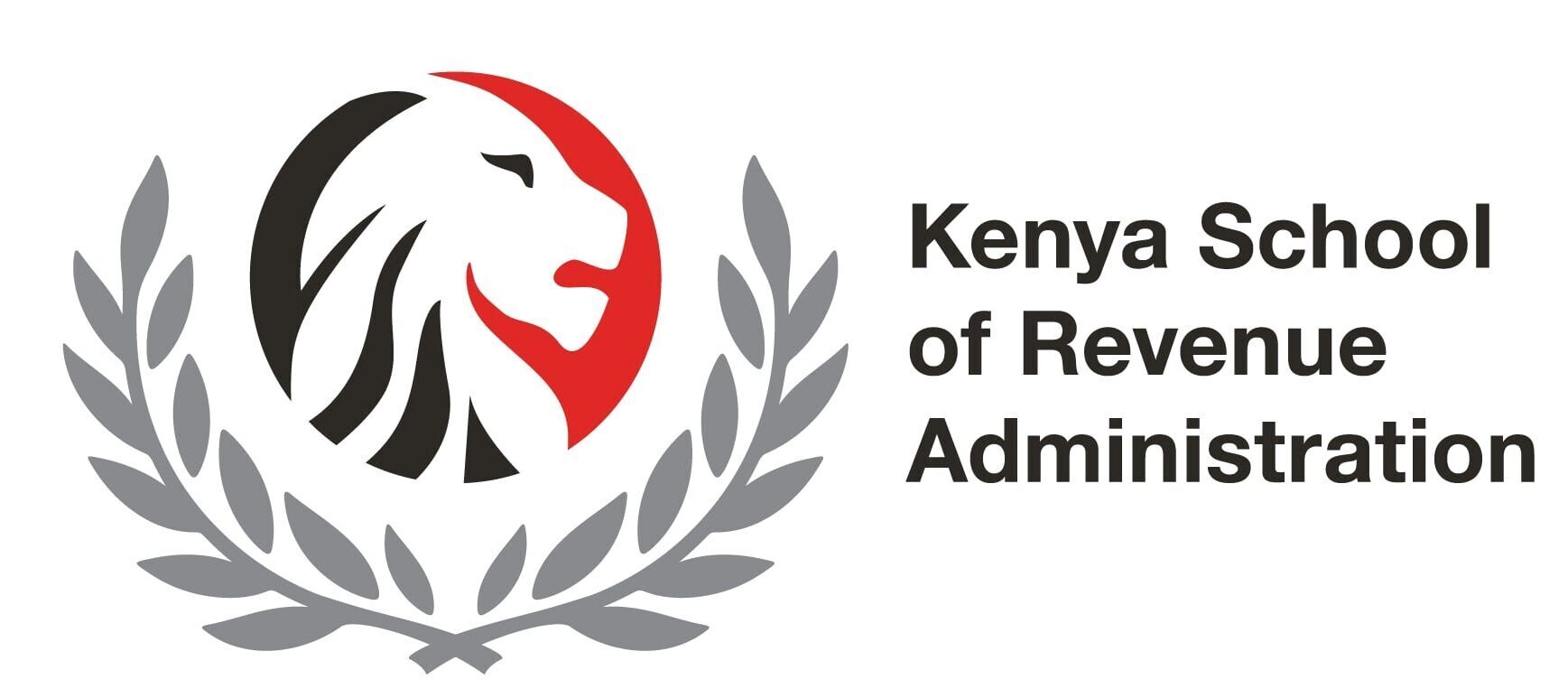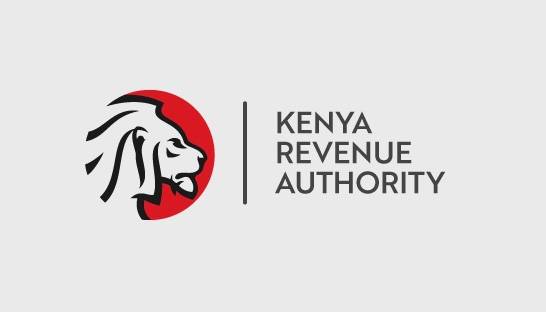During the process of customs clearance, the Respondent disputed the Appellant’s classification of the haemodialysers and upon review, determined that the applicable tariff classification was 8421.29.00 attracting import duty at the rate of 10% and VAT at the rate of 14%.
JUDGEMENT
BACKGROUND
- The Appellant herein is a limited liability company incorporated in the Republic of Kenya. Its principal activity is provision of medical services.
- The Respondent is a principal officer of Kenya Revenue Authority (KRA). KRA is established under the Kenya Revenue Authority Act (Cap 469) Laws of Kenya. The Respondent is appointed under Section 13 of the Kenya Revenue Authority Act, 1995 and Section 5 of the East Africa Community Customs Management Act (EACCMA) mandated with the management and control of customs including the collection, accounting and general administration of customs revenue on behalf of the Government of Kenya.
- On 4thAugust 2020, the Appellant imported haemodialysers from China under customs entry number 2020ICDN22479; the haemodialysers were declared under HS Code 9018.90.00 which attracted import duty at the rate of 0% and VAT at the rate of 14%.
During the process of customs clearance, the Respondent disputed the Appellant’s classification of the haemodialysers and upon review, determined that the applicable tariff classification was 8421.29.00 attracting import duty at the rate of 10% and VAT at the rate of 14%.
- On 12thAugust 2020, the Appellant, through Messrs Makiwan Logistics Limited wrote to the Respondent disputing the Respondent’s decision regarding the tariff classification of the haemodialysis apparatus; the Respondent replied to this letter on the 17th of August 2020 affirming its position that the applicable tariff classification was 8421.29.00.
- On the 19thof August 2020, the Appellant again wrote to the Respondent disputing the classification and on 24th August 2020, the Respondent wrote back confirming the tariff classification.
- Subsequently, the Respondent undertook a review» of the Appellant’s importations for the period 2015 – 2020 and on 24thSeptember 2020 issued a demand for Kshs. 4,905,667.00 made up of principal tax together with interest for the years 2016, 2017, 2018 and 2019.
- Being dissatisfied with the said demand, the Appellant filed its Notice of Appeal via email on 29thSeptember 2020 and filed the Memorandum of Appeal and Statement of Facts on 13th October 2020.
- Upon service, the Respondent filed its Statement of Facts on 11thNovember 2020.
- The Appellant filed its submissions on 8th March 2021 and the Respondent filed its submissions on 17thMarch 2021. When the matter came up for hearing on 26th March 2021, the parties elected to proceed on the basis of their written submissions.
THE APPEAL
- The Appeal is founded upon three grounds as reproduced below-
- The Respondent erred in both law and fact by demanding for unpaid import duties and taxes on 24thAugust 2020 and 24th September 2020 having been notified that the imported goods under consideration were import duty free by tariff.
- The Respondent erred in both law and fact by ruling that the items under consideration are classifiable under harmonised code tariff heading 8421 and not harmonised code heading 9018.
- The Respondent erred in both law and fact by being inconsistent with tariff classification of the items under consideration over different periods of time.
- The Appellant, in its submissions, stated that the dispute between it and the Respondent is in regard to the classification of haemodialysis apparatus.
- The Appellant states that the haemodialysis apparatus it imported are specifically and exclusively for use in artificial kidney dialysis of patients with renal disorders and that the same are used together with artificial kidney dialysis apparatus but are imported and sold separately.
- The Appellant further states that it imported the haemodialysis apparatus under Harmonised System (HS) Code 9018.90.00 from 2015 to August
2020 when the Respondent declared that the applicable tariff classification is HS Code 8421.29.00.
- The Appellant submits that classification of imports in Kenya is governed by the East African Community Common External Tariff (EAC CET)
- The Appellant is of the view that haemodialysis apparatus it imports are not normal dialysers which have a permeable membrane that separates just colloidal particles which are in the purview of classification in subheading
8421 but rather are special medical filters for blood to remove toxins in the blood associated with renal disorders in humans.
- The Appellant framed two issues for determination by the Tribunal as follows-
- Is a haemo-dialyser which is specifically designed for and can only be used with artificial kidney apparatus to be classified under Chapter 90 of the EAC CET as part and/or accessory for artificial dialysis or Chapter 84 of the EAC CET?
- Upon determination, does the Commissioner have powers under the law to demand taxes ex post facto that is retro-actively?
- According to the Appellant, a casual reading may well lead one to classify the haemo-dialysers under tariff code 8421.29.00 but that a careful reading of the notes to chapter 8421 of the EAC CET reveals that the same excludes artificial kidney dialysis apparatus. The explanatory notes to this heading states “The Heading also covers dialysers, special type filters consisting essentially of a semi permeable membrane through which liquids can pass by diffusion and thus be separated from colloidal particles”
- The Appellant points out that heading 9018 of the EAC CET covers uInstruments and appliances used in medical, surgical, dental or veterinary sciences, including scintigraphic apparatus, other electro-medical apparatus and sight-testing instrumentf. In addition, the Appellant placed reliance on the notes to Chapter 90 of the EAC CET which states as follows-
“2.- Subject to Note 1 above, parts and accessories for machines, apparatus, instruments or articles of this Chapter are to be classified according to the following rules:
- Parts and accessories which are goods included in any of the headings of this Chapter or of Chapter 84, 85 or 91 [other than heading 84.87, 85.48 or 90.33] are in all cases to be classified in their respective headings;
- Other parts and accessories, if suitable for use solely or principally with a particular kind of machine, instrument or apparatus, or with a number of machines, instruments or apparatus of the same heading (including a machine, instrument or apparatus of heading 90.10, 90.13 or 90.31) are to be classified with the machines, instruments or apparatus of that kind; ”
- The Appellant is of the view that the haemo-dialysers are indispensable to the functioning of kidney dialysis apparatus and are therefore parts of kidney dialysis apparatus in the terms contemplated in the notes to chapter 90 of the EAC CET and thus properly classifiable under HS Code 9018.90.00.
- The Appellant notes that while Kenya is a member of the World Customs Organization (WCO) its opinions are not legally binding and need to be reviewed in the context of the instant case where substantive issues of classification have been raised.
- The Appellant invites the Tribunal to find that it is unfair and contrary to the Bill of Rights for the Respondent to demand taxes after the fact when it (the Appellant) had been operating on the strength of a ruling by the Respondent that the applicable tariff classification to the goods was 9018.90.00.
- For the above reasons the Appellant prays that this Tribunal
- Be pleased to allow the Appeal;
- Be pleased to allow the Appellant’s objection elated 12thAugust
2020 and consider its Appeal for review dated 17th August 2020;
- Be independent in the manner it may deem fit consider the facts, law and analysis presented by the Appellant in arriving at the correct tariff classification for the haemodialysers for the artificial kidneys;
- Orders a stay of the demand of notice for payment on extra taxes assessed retrospectively on the basis of the new tariff classification
(tariff heading 8421) for the haemodialysers imported for the period
2015-2020; and
- Be pleased to grant any further orders it deems fit.
THE RESPONSE
- On its part, the Respondent frames three issues for determination by the Tribunal as follows-
- Whether the Appeal is time-barred having been filed outside the statutory period allowed by the TAT Act;
- Whether the Respondent erred by ruling that the items were classified under harmonized code tariff heading 8421 and not harmonized tariff heading 9018; and
- Whether the Respondent can legally claim taxes that had been underpaid by the Appellant.
- Regarding the first issue for determination, the Respondent alleges that the decision which the Appellant seeks to Appeal from was issued on the 24th August 2020 and the Appellant filed a Notice of Intention to Appeal on 8th October 2020 which is outside the statutory period of 45days provided under Section 230 of EACCMA.
- The Appellant is in contravention of Section 230 (2) of the EACCMA in that it did not file and serve the Appeal within the prescribed period of 45days from the date of the decision by the Respondent. In addition, the Appellant
has not applied for or received an extension of time from the Tribunal, accordingly, the Appeal is improperly before the Tribunal.
- The Respondent implores the Tribunal to take note of the case of Nairobi CA Civil Appeal No. 48 of 2014, Patrick Kirunja Kithinji -v- Victor Mugira Marete for the proposition that failure to file the Appeal in time goes to the jurisdiction of the Tribunal and that the Tribunal only has jurisdiction to consider Appeals filed on time or filed out of time with leave of the Tribunal.
- In light of the failure to file the Appeal on time, the Respondent invites the Tribunal to strike out the Notice of Appeal and Memorandum of Appeal filed by the Appellant.
- The Respondent further notes that the Appellant did not object to its tax demand dated 24thSeptember 2020 which would have given rise to an Objection Decision which would form the basis of an Appeal. It further asserts that by failing to raise an objection within the statutory period, the tax demand stands by operation of the law.
- On the issue of the classification of the haemodialysers, the Respondent states that tariff classification of goods in Kenya is governed by the EAC CET read together with the explanatory notes and guided by the General Interpretation Rules (GIRs). GIR 1 states that classification shall be determined according to the terms of the headings and any relative section or chapter notes and provided such headings or notes do not otherwise require, according to the following provisions.
- The Respondent observes that subheading 8421 of the EAC CET includes filtering or purifying machinery and apparatus for liquids and gas and that the notes to subheading 84.21 expressly state that dialysers, are covered under the heading.
- In addition, the Respondent notes that Kenya is a member of the WCO and that its rulings are therefore binding on Kenya. The WCO issued a decision in 1999 wherein it classified haemodialysis apparatus under subheading 8421 being opinion 8421.29/1.
- The Respondent requests the Tribunal to consider a customs entry filed by a different importer wherein that importer has applied what the Respondent considers to be the correct HS Code that is 8421.
- The Respondent also placed reliance on the explanatory notes to Chapter
90 of the EAC CET for the proposition that parts and accessories of equipment covered under that chapter which are goods included in headings 84, 85 or 91 shall be covered by those respective headings.
- In response to the question of whether it (the Respondent) was entitled to claim taxes that had been underpaid by the Appellant in the past, the Respondent avers that it is empowered under Sections 41 and 135 of the EACCMA to examine goods entered to determine the accuracy of the entry and to demand short-levied taxes for a period of up to 5years respectively and that its action in undertaking a post clearance audit of the Appellant’s affairs was justified.
- For these reasons the Respondent prays as follows:-
- The Appeal be dismissed in its entirety;
- The demand for Kshs 4,905,667.00 be upheld; and
- The Respondent be awarded the costs to the Appeal.
ISSUES FOR DETERMINATION
- We have reviewed the pleading filed by the parties and have determined the following to be the issues in controversy and whose resolution will determine this Appeal:-
- Whether the Appeal is properly before the Tribunal.
- What is the correct tariff classification applicable to the haemodialysers imported by the Appellant?
- Whether the Respondent is justified in demanding short-levied taxes through its demand letter of 24thAugust 2020.
ANALYSIS AND FINDINGS
- It is to these issues that the Tribunal will turn into as hereunder.
- Whether the Appeal is properly before the Tribunal.
- Section 230 (2) of the EACCMA states that-
“A person intending to lodge an Appeal under this section shall lodge the Appeal within 45 days after being served with the decision, and shall serve a copy of the Appeal on the Commissioner”
- In our view, the Appeal is properly before the Tribunal. We note that the Appellant sent its Notice of Intention to Appeal to the Tribunal by electronic mail on 29thSeptember 2020 and its receipt acknowledged by the Tribunal’s Secretariat on the same day. The said Notice of Intention to Appeal was physically received and stamped on the 8th October 2020.
- Both parties accept that the Respondent’s decision which gave rise to this Appeal is contained in the Respondent’s demand letter dated 24thAugust
- The Notice of Intention to Appeal dated and electronically received on 29thSeptember 2020 was received within the 45-day period provided under the EACCMA. The notice was served on the Respondent on the 8th of October 2020 which is outside the 45-day period but a plain reading of Section 230 (2) leads us to conclude that it is the filing of the Appeal and not service on the Commissioner that must take place within 45 days of the date of service of the decision.
- Consequently, the Appeal is properly before the Tribunal.
- What is the correct tariff classification applicable to the hemodialysers imported by the Appellant?
- Merchandise imported into Kenya is classified under the EAC CET and Tariff classification is governed by the principles set forth in the General Rules of Interpretation (GRIs).
- GRİ 1 requires that classification be determined first according to the terms of the headings of the tariff schedule and any relative section or chapter notes and, unless otherwise required, according to the remaining GRIs taken in that order. GRI 2 (a) states “Any reference in a heading to an article shall
be taken to indude a reference to that article incomplete or unfinished, provided that, as entered, the incomplete or unfinished article has the essentia! character of the complete or finished article… ”
- GRI 6 requires that the classification of goods in the subheadings shall be determined according to the terms of those subheadings, any related subheading notes and mutatis mutandis, to the GRIs. In interpreting the EAC CET, the explanatory notes of the HS Code may be utilized. The explanatory notes, although not legally binding, provide a commentary on the scope of each heading, and are generally indicative of the proper interpretation of the EAC CET.
- The Appellant admits that the haemodialysis apparatus it imported were for use with artificial kidney dialysis apparatus. In accordance with Rule 1 and Note 2 (a) to Chapter 90 of the EAC CET, subject to Note 1 to Chapter
90, “parts and accessories for machines, apparatus, instruments or articles of this Chapter, (emphasis supplied^ which are goods included in any of the headings of this Chapter or of Chapter 84, 85 or 91 (other than heading No. 84.85, 85.48or90.33) are in ail cases to be classified in their respective headings … Further, the second paragraph of Part 111 of the explanatory notes to Chapter 90, gives guidance for the application of Chapter Note 2(a) to this Chapter. According to this note, “parts which in themselves constitute articles falling in any particular heading of Chapter 90, 84, 85or 91 are in all cases to be classified in their respective headings”.
- The subheading 84.21 covers, inter alia, “filtering or purifying machinery and apparatus for liquids:In addition, the explanatory notes to this heading state “The Heading also covers dialysers, special type filters consisting essentially of a semi permeable membrane through which liquids can pass by diffusion and thus be separated from colloidal particles. ”
- The Respondent has placed before us an opinion of the WCO (opinion No. 8421.29/1) wherein that body opined that disposable sterilised dialyzer is properly classified under HS Code 8421.29. Part of the description of the dialyzer considered by the WCO reads as follows-
“ … in order to function, the article is connected by means of tubes, to a special appliance (e.g., an artificial kidney) which enables blood and the dialysate to circulate and toxic matter to be evacuatecT.
- The Appellant, in its submissions described the haemodialysers as follows- “The Haemodiafysers are used to remove a broad range of uremic toxins, with minimum albumin losses and high endotoxin retaining characteristics. The haemodiafysers are DESIGNED to function together with AN ARTIFICIAL KIDNEY DIALYSIS APPARATUS but are imported and sold separately. ”
- We are persuaded that the Appellant’s merchandise is the same or substantially similar to the merchandise described in opinion 842129/1 and while we agree with the Appellant that opinions of the WCO are not dispositive in nature and are not legally binding upon it or this Tribunal, we are nevertheless persuaded by the opinion which we find to be on all fours with the instant case.
- We note that under Section 122(6) of the EACCMA, the Respondent is required to apply or interpret the Section and the provisions of the Fourth Schedule of the Act (which deals with the determination of value of imported goods liable to ad valoremimport duty) after taking due regard to the decisions, rulings, opinions, guidelines, and interpretations given by the directorate, the World Trade Organization (WTO) or the Customs Corporations Council.
- Having considered the explanatory notes to headings 84 and 90 of the EAC CET, the description of the Appellant’s haemodialysers, the provisions of Section 122 (6) of the EACCMA and opinion 8421.29/1 of the WCO we are persuaded that the correct tariff classification for the Appellant’s haemodialysers is 8421.29.00.
- Consequently, the Tribunal makes a finding that the correct tariff classification applicable to the hemodiatysers imported by the Appellant is 8421.29.00.
- Whether the Respondent is justified in demanding short-levied taxes through its demand letter of 24th August 2020.
- The post clearance audit undertaken by the Respondent covered the years 2015 to 2020; the Respondent based the demand on the powers granted under Section 135 of the EACCMA which states that-
“(1) Where any duty has been short levied or erroneously refunded, then the person who should have paid the amount short levied or to whom the refund has erroneously been made shall, on demand by the proper officer, pay the amount short levied or repay the amount erroneously refunded, as the case may be; and any such amount may be recovered as if it were duty to which the goods in relation to which the amount was short levied or erroneously refunded, as the case may be, were liable. ”
- The Appellant on the other hand argues that it had imported dialyzers under tariff classification 9018.90.00 since the year 2015 with the acquiescence of the Respondent and it is therefore unfair and against the rules of natural justice for the Respondent to demand taxes from years past.
- We note that no explanation has been provided as to why the post clearance audit only took place 5years later yet the Respondent has all along had access to the Appellant’s import information and documents.
- Article 47 of the Constitution of Kenya, 2010 entitles every person to “administrative action that is expeditious, efficient, lawful, reasonable and procedurally fair. ”1 n the instant case, the Appellant imported goods which it sold to third parties at a price that took into account the taxes levied by the Respondent. With due respect to the Respondent, demanding that the Appellant furnish taxes for goods sold between two and five years ago is unreasonable and unfair.
- In the case of Republic v Kenya Revenue Authority Ex Parte Universal Corporation Ltd [2016] eKLR, Odunga J, said the following regarding the Respondent’s power to undertake post clearance audits-
“ 149. I agree with the position taken by the Respondent that the Customs Officer is supposed to verify the accuracy of the entries made by the clearing agent within the shortest time possible in order to facilitate the release of the goods and mitigate the accrual of demurrage and customs warehouse
rent hence the reason for conferment of the powers under section 235and 236of the EACCMA to conduct Post Clearance Audits to verify the accuracy of the entries after the goods have been released from Customs control.
- However the exercise of statutory power must be so exercised in a manner that is fair and just to the people against whom the same is being exercised.”
- In paragraph 157 of the Universal Case{Supra) Odunga J, further states-
“ 157. However, where the taxing authority goes to sleep and as a result lulls the taxpayer into a false sense of security that the taxes in question would not be demanded, as a result of which the tax payer loses recourse which would have been legally available to it had the tax been demanded promptly, it may well be unfair and unjust for the demand to be sustained”
- The Tribunal notes that the Appellant has raised the issue of fair administrative action in respect to the Respondent’s conduct in its post audit clearance processes. If the Appellant is aggrieved by the said processes it is at liberty to seek redress elsewhere.
- The Appellant’s argument above and the cited authority notwithstanding and considering all the circumstances herein. The Tribunal notes that the Respondent is empowered by statute to carry out post clearance audits and demand for short-levied taxes as long as it is within the statutory timelines provided under Sections 235 and 236 of EACCMA.
- Consequently, the Tribunal makes a finding that the Respondent did not err In law and fact in demanding short-levied taxes through its letter of 24th August, 2020.
FINAL DECISION
- The upshot of the above is that this Appeal is not merited and fails. Consequently, the Tribunal makes the following Orders-
- The applicable tariff classification to the haemodialysis apparatus imported by the Appellant is HS Code tariff heading 8421.
- The Respondent’s demand for Kshs. 4,905,667.00 being short- levied taxes for the years 2016, 2017, 2018 and 2019 is hereby upheld.
- Each party shall bear its own costs.
- It is so ordered.
DATED and DELIVERED at NAIROBI this 18th day of June, 2021.


